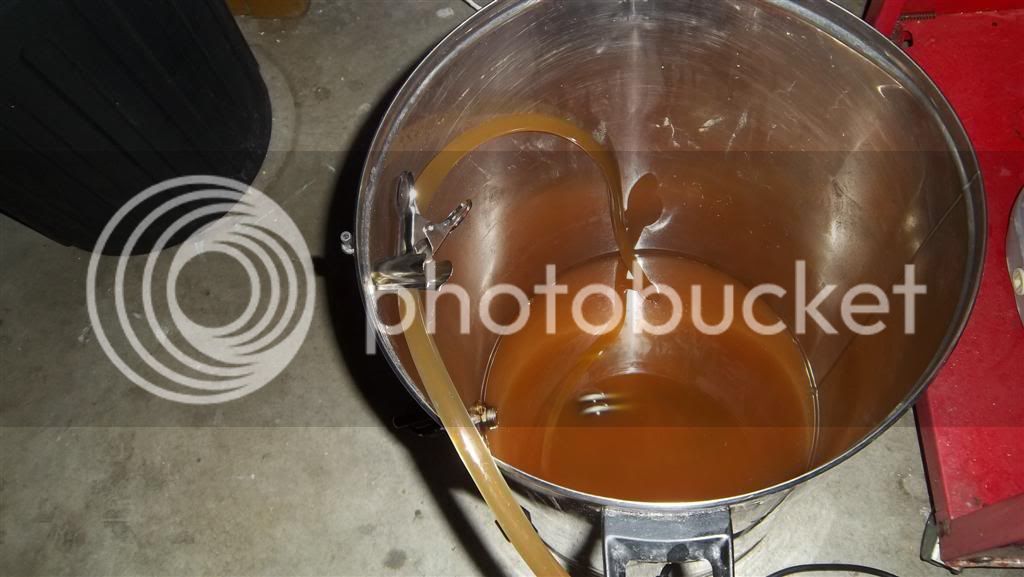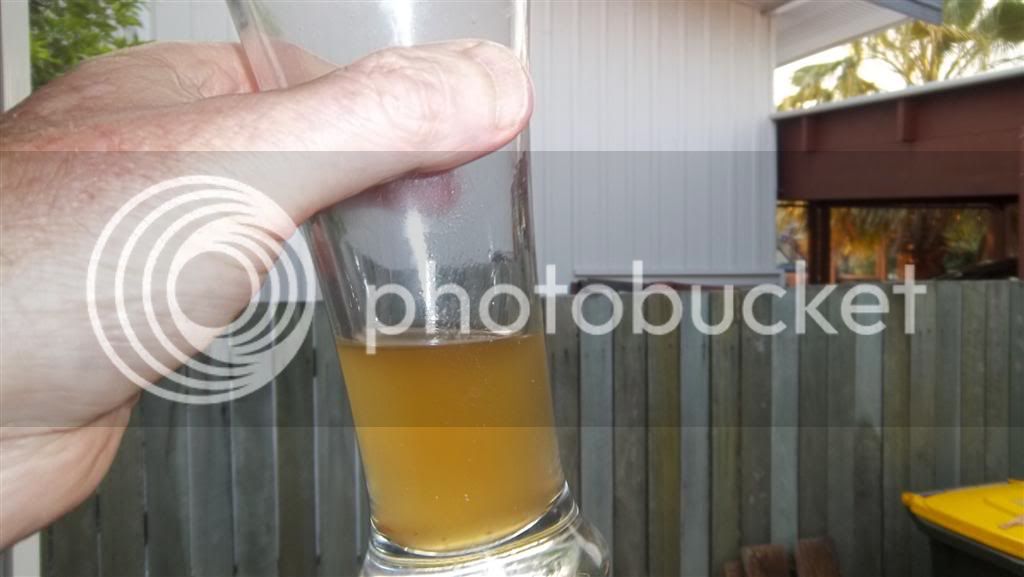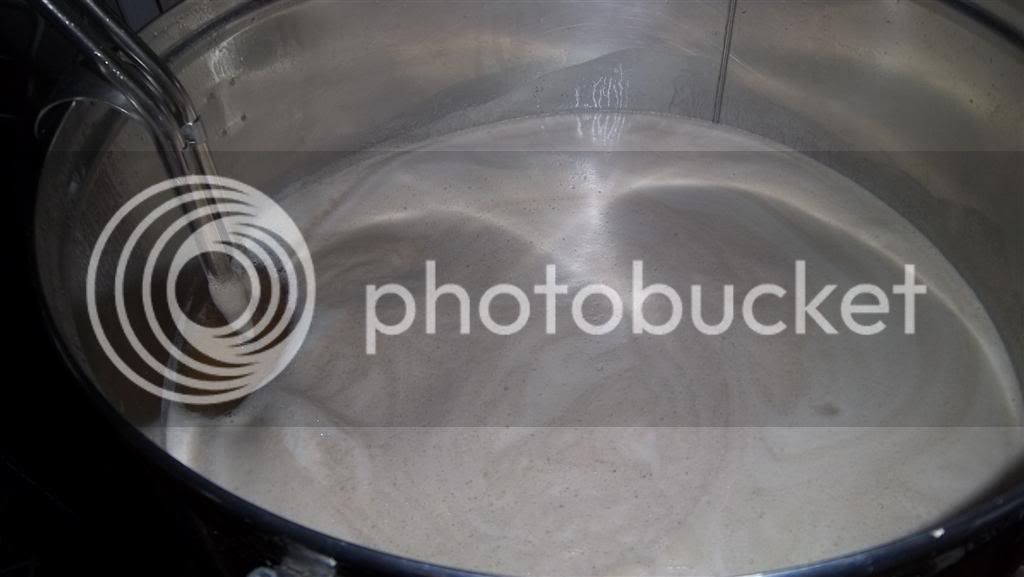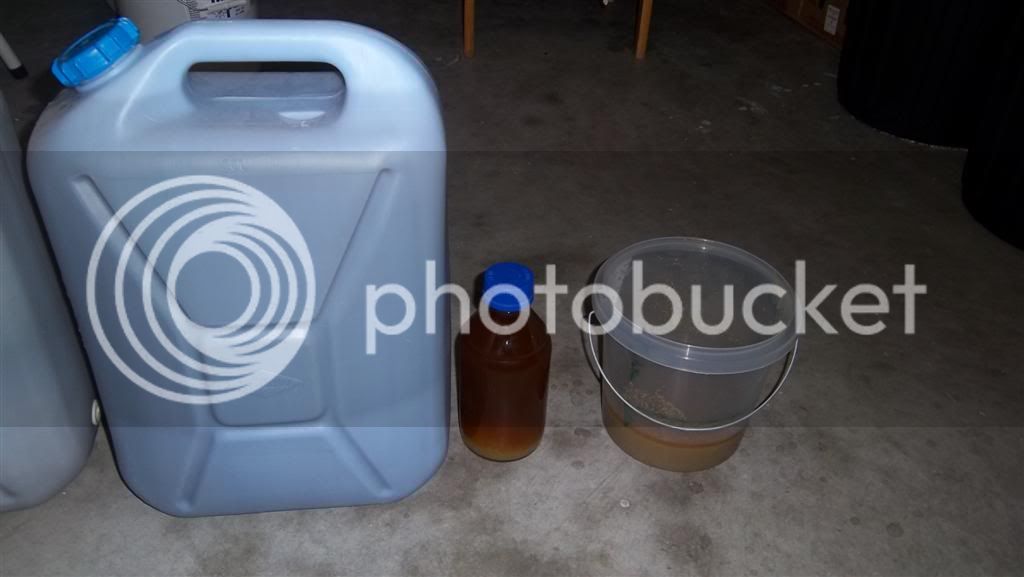BALTIC
Introducing my tweaked brewing system.
I've been BIAB-ing for nearly 3 years, doing full-volume mashes in a 40L electric urn.
This has earned me some gongs and plaques and a shelf ornament or two as well as a succession of nice house brews.
However a couple of issues which I find increasingly frustrating:
Efficiency
A portion of sweet wort always remains trapped in the grains, and the bigger the grain bill the more you lose. You can do a dunk sparge and boil longer but this isn't a particularly accurate or reproducible technique and IMHO it increases the trub problem further.
Big trub
With BIAB the wort going into the kettle is quite turbid. This is easily fixed with a good boil and a good floc, but it does rob wort volume. And just to clear one thing up: I'm not talking about clear wort into kettle always gives better beer in the glass - I don't subscribe to that generally (jury is out on a couple of issues like chill haze) here I'm concentrating on wort recovery levels only.
Answer: just add more grain to the recipe and up the brew length by a couple of litres what's an extra couple of dollars tightarse.
Yes no problem with that, but after visiting a couple of brew days, and touring a craft brewery, I now realise that over the last three years I have done the litre-equivalent of 15 20 brew days simply to throw them down the sink. I'd prefer the beer in the glass, not in the jellyfish in Moreton Bay.
Or put it another way it would be nice to do a 19-20L length to end up with a corny, and not a 23L length to take into account all the losses.
It would also make it more feasible to follow other peoples recipes and particularly clone recipes that get published.
So I have introduced a fairly inexpensive and rather elegantly simple stage to my BIAB brews. It combines elements of full-volume BIAB, Maxi-BIAB and 3 vessel brewing (although a different three vessels as you will see) and in the trial today it added around half an hour to the brew day.
However this was just about balanced out by my improved heating arrangements I have over the side immersion heaters purchased a couple of weeks ago, and this has brought my ramping times way down with step mashes and with raise-to-boil.
BALTIC
Bag and Lauter Tun in Combination
I'll let the pictures speak for themselves:
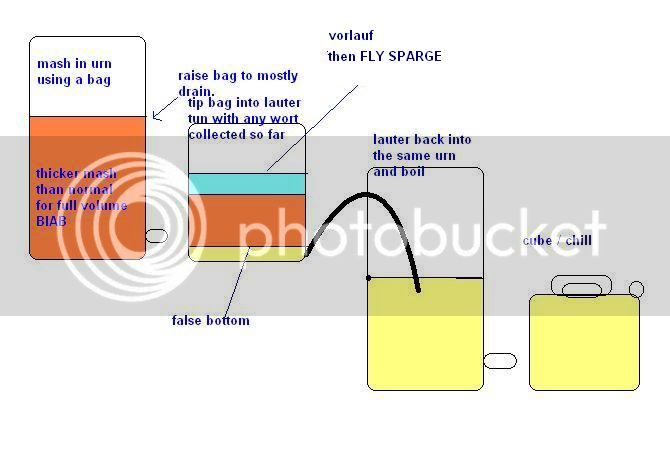
So it's basically what they would do at, say, Murrays Brewery where they have the single heated vessel for mashing and boiling, with a passive lauter tun to one side where the wort is extracted and pumped back to the original cleaned vessel for boiling .
Note to 3v and HERMS / RIMS guys we are talking about a single active vessel here i.e temperature controllable so no separate mash tun or separate kettle.
I did a classic BIAB yesterday, and a BALTIC today using exactly the same recipe.
5000 Perle
100 Caraaroma
100 Flaked Wheat
15 Magnum 60 mins
30 Cascade 20 mins
30 Centennial 10 mins
30 Cascade flameout
30 Centennial dry
W-1056
Results for the bog standard BIAB were more or less what I get for this size of grain bill, 25L batch yielded a 1L Schott Bottle which is probably 50% recoverable, I had to stop filling the cube as it started running break, and the remains were around 3L of unrecoverable trub.
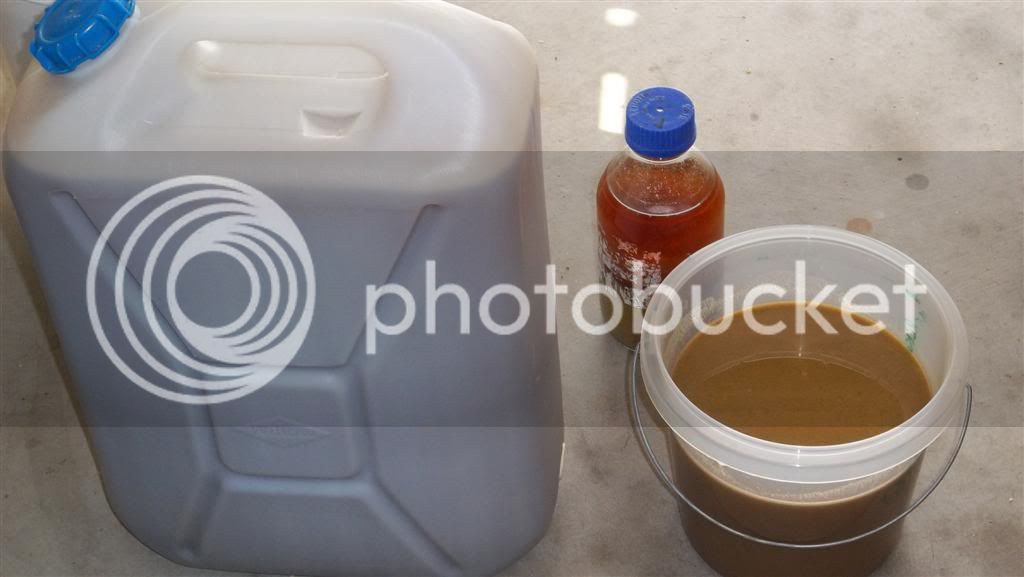
OG was 1045 which is reported as 72%.
I guess after fermentation I'll get a keg plus two PETs
*****************************
So onto today's brew
The lauter tun is simply a domed false bottom in a 20L wash bowl, which it fits neatly - with pickup tube which exits the LT through a drilled hole. Thanks to Thirsty Boy for the basic design.
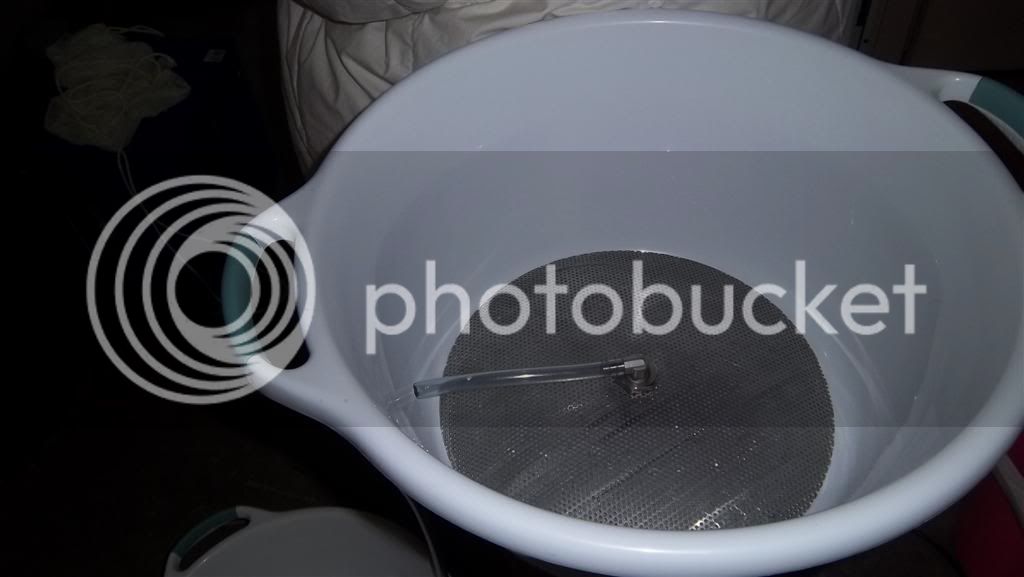
Hot liquor for the sparge comes just from a pail with an over the side heater, you can class that as a vessel although conceptually you could just as easily use an instant hot water device (which some guys do).
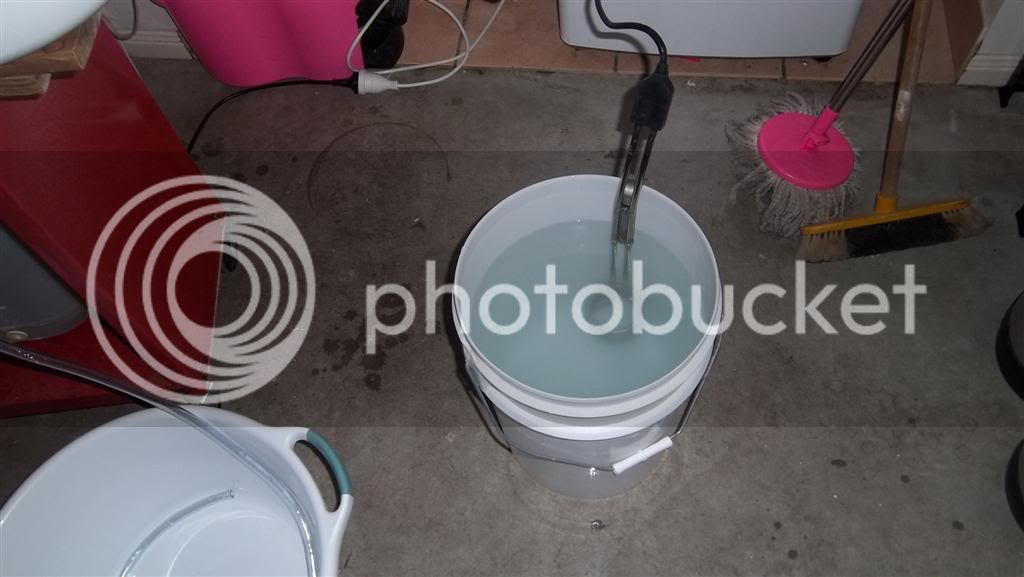
It was also a good excuse to buy a refractometer to keep an eye on the gravity of the runnings. Hehehe
So, normal BIAB but note the lower mash level
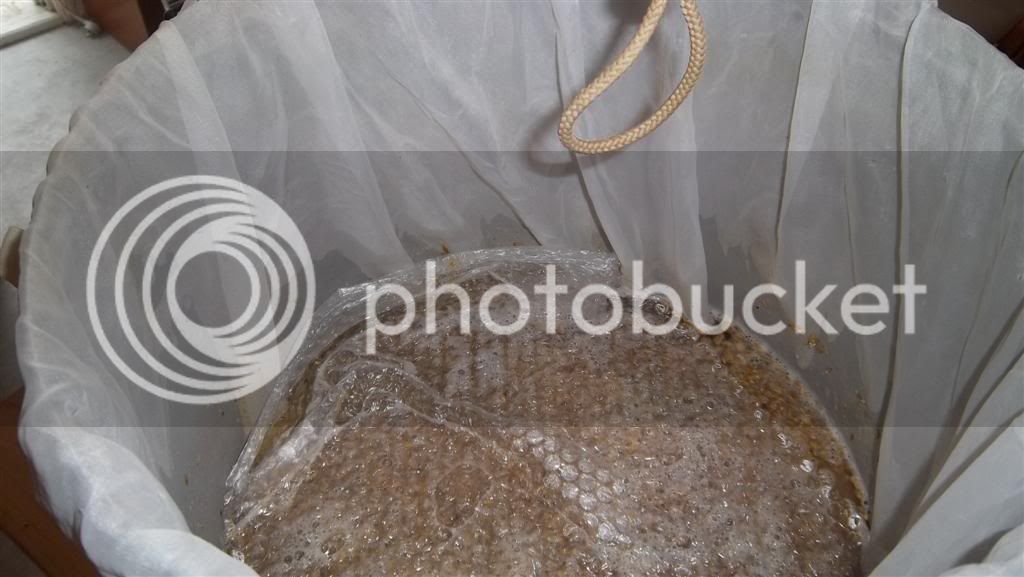
I put a bubblewrap covering on it and lagged the urn as normal.
Even at a Liquor to grist ratio of 3.5 : 1 it was still quite liquid and I'd have no trouble doing a step mash quite surprised.
After the mash, hoisted the bag and let it drain a while till it bacame handle-able, then tipped the grain into the LT to make a grain bed, ran the liquor out of the urn and commenced draining and fly sparging. I did a vorlauf first and although it came out a lot clearer it wasn't the clarity I had been hoping for. Sparged the first half into the urn on the floor and the second half into another bowl and kept adding to urn. Stopped sparging at 1010.
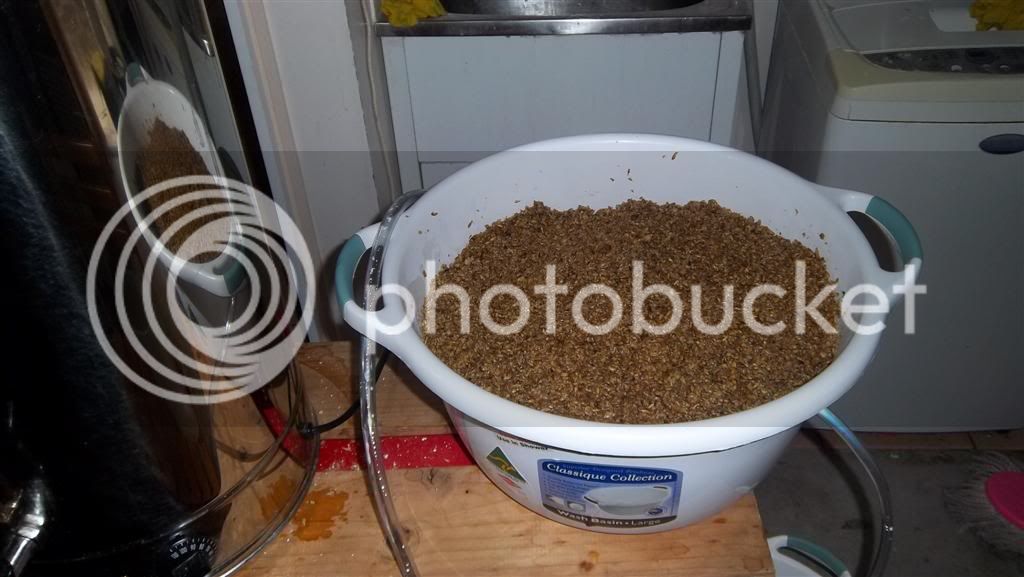
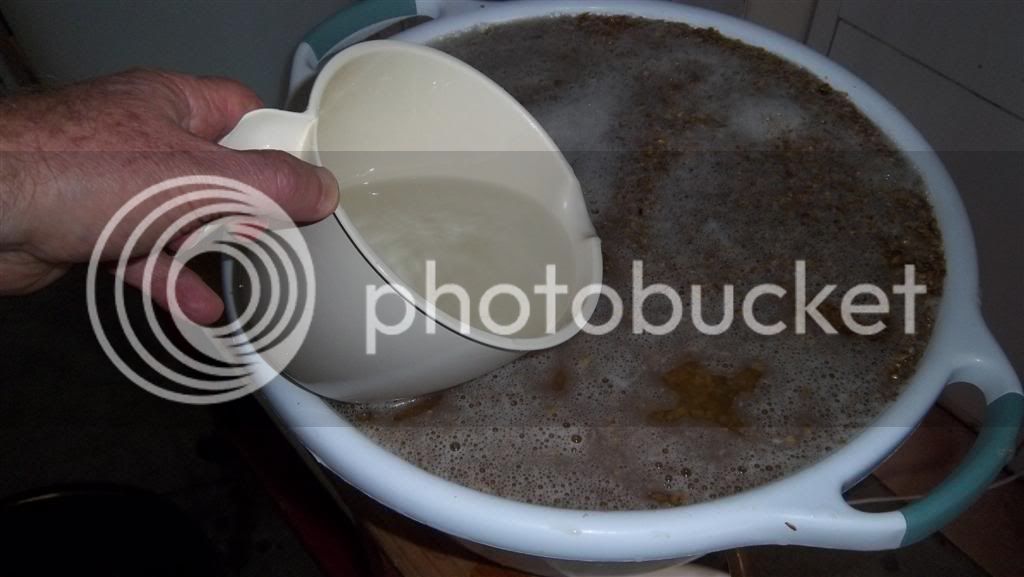
See following post (images limit)
Introducing my tweaked brewing system.
I've been BIAB-ing for nearly 3 years, doing full-volume mashes in a 40L electric urn.
This has earned me some gongs and plaques and a shelf ornament or two as well as a succession of nice house brews.
However a couple of issues which I find increasingly frustrating:
Efficiency
A portion of sweet wort always remains trapped in the grains, and the bigger the grain bill the more you lose. You can do a dunk sparge and boil longer but this isn't a particularly accurate or reproducible technique and IMHO it increases the trub problem further.
Big trub
With BIAB the wort going into the kettle is quite turbid. This is easily fixed with a good boil and a good floc, but it does rob wort volume. And just to clear one thing up: I'm not talking about clear wort into kettle always gives better beer in the glass - I don't subscribe to that generally (jury is out on a couple of issues like chill haze) here I'm concentrating on wort recovery levels only.
Answer: just add more grain to the recipe and up the brew length by a couple of litres what's an extra couple of dollars tightarse.
Yes no problem with that, but after visiting a couple of brew days, and touring a craft brewery, I now realise that over the last three years I have done the litre-equivalent of 15 20 brew days simply to throw them down the sink. I'd prefer the beer in the glass, not in the jellyfish in Moreton Bay.
Or put it another way it would be nice to do a 19-20L length to end up with a corny, and not a 23L length to take into account all the losses.
It would also make it more feasible to follow other peoples recipes and particularly clone recipes that get published.
So I have introduced a fairly inexpensive and rather elegantly simple stage to my BIAB brews. It combines elements of full-volume BIAB, Maxi-BIAB and 3 vessel brewing (although a different three vessels as you will see) and in the trial today it added around half an hour to the brew day.
However this was just about balanced out by my improved heating arrangements I have over the side immersion heaters purchased a couple of weeks ago, and this has brought my ramping times way down with step mashes and with raise-to-boil.
BALTIC
Bag and Lauter Tun in Combination
I'll let the pictures speak for themselves:

So it's basically what they would do at, say, Murrays Brewery where they have the single heated vessel for mashing and boiling, with a passive lauter tun to one side where the wort is extracted and pumped back to the original cleaned vessel for boiling .
Note to 3v and HERMS / RIMS guys we are talking about a single active vessel here i.e temperature controllable so no separate mash tun or separate kettle.
I did a classic BIAB yesterday, and a BALTIC today using exactly the same recipe.
5000 Perle
100 Caraaroma
100 Flaked Wheat
15 Magnum 60 mins
30 Cascade 20 mins
30 Centennial 10 mins
30 Cascade flameout
30 Centennial dry
W-1056
Results for the bog standard BIAB were more or less what I get for this size of grain bill, 25L batch yielded a 1L Schott Bottle which is probably 50% recoverable, I had to stop filling the cube as it started running break, and the remains were around 3L of unrecoverable trub.

OG was 1045 which is reported as 72%.
I guess after fermentation I'll get a keg plus two PETs
*****************************
So onto today's brew
The lauter tun is simply a domed false bottom in a 20L wash bowl, which it fits neatly - with pickup tube which exits the LT through a drilled hole. Thanks to Thirsty Boy for the basic design.

Hot liquor for the sparge comes just from a pail with an over the side heater, you can class that as a vessel although conceptually you could just as easily use an instant hot water device (which some guys do).

It was also a good excuse to buy a refractometer to keep an eye on the gravity of the runnings. Hehehe
So, normal BIAB but note the lower mash level

I put a bubblewrap covering on it and lagged the urn as normal.
Even at a Liquor to grist ratio of 3.5 : 1 it was still quite liquid and I'd have no trouble doing a step mash quite surprised.
After the mash, hoisted the bag and let it drain a while till it bacame handle-able, then tipped the grain into the LT to make a grain bed, ran the liquor out of the urn and commenced draining and fly sparging. I did a vorlauf first and although it came out a lot clearer it wasn't the clarity I had been hoping for. Sparged the first half into the urn on the floor and the second half into another bowl and kept adding to urn. Stopped sparging at 1010.


See following post (images limit)





